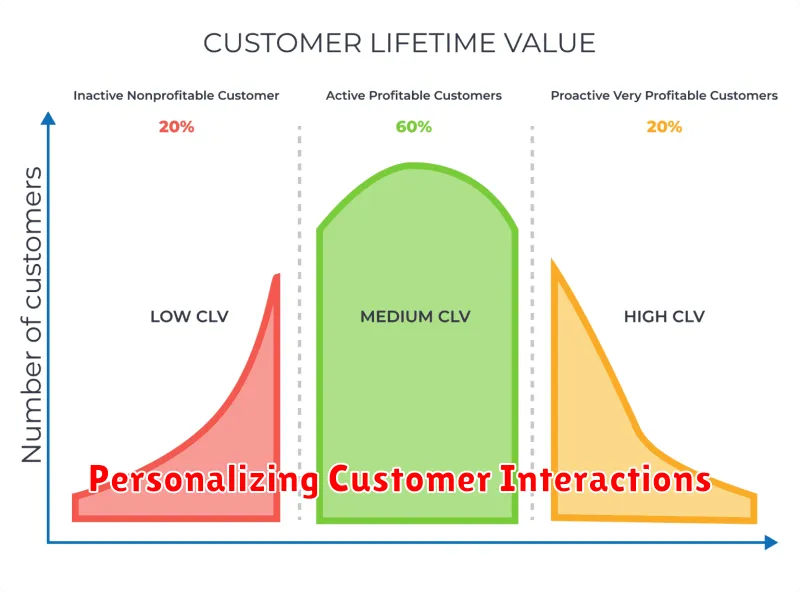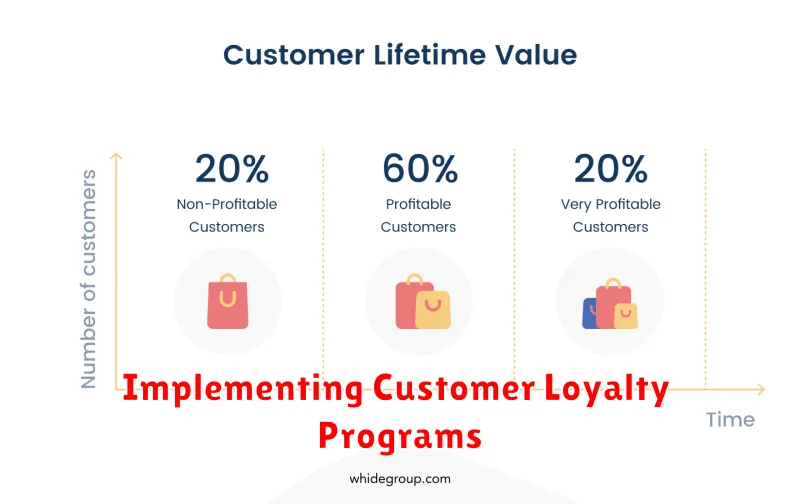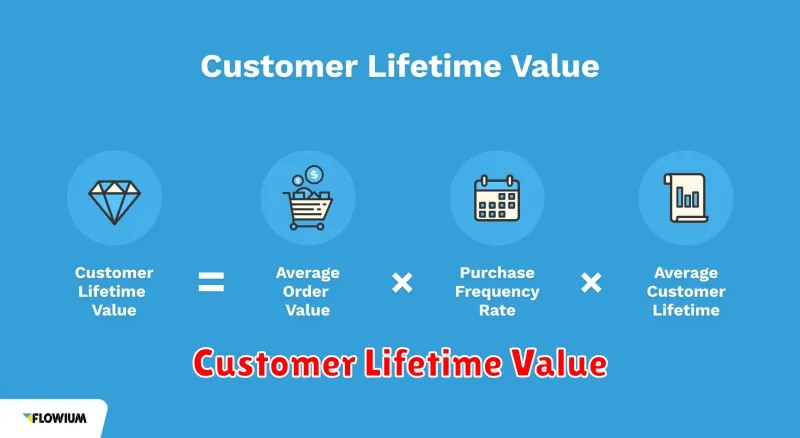In today’s fiercely competitive marketplace, retaining existing customers is crucial for sustained business growth. Customer Lifetime Value (CLTV) represents the total revenue a business can expect from a single customer over their entire relationship. Maximizing CLTV requires a comprehensive approach that focuses on building strong customer relationships and fostering loyalty. This article will delve into effective CRM strategies designed to optimize customer lifetime value, enabling businesses to unlock their true potential and drive long-term profitability.
Understanding Customer Lifetime Value (CLTV)
Customer Lifetime Value (CLTV) is a metric that measures the total revenue a company can expect to generate from a single customer over the entire duration of their relationship with the company. It is a crucial metric for businesses as it helps them understand the long-term value of their customers and make informed decisions about customer acquisition, retention, and growth strategies.
Why is CLTV important?
CLTV is a valuable metric for several reasons:
- Customer Acquisition Cost (CAC) Optimization: By comparing CLTV with CAC, businesses can determine the profitability of their customer acquisition efforts. If CLTV exceeds CAC, it indicates a healthy business model, while a lower CLTV compared to CAC suggests a need for optimization.
- Customer Segmentation: CLTV allows businesses to segment their customers based on their projected lifetime value. This segmentation can inform targeted marketing campaigns and customer service strategies to maximize the value of each customer segment.
- Investment Decisions: Understanding CLTV helps businesses prioritize investments in customer retention, loyalty programs, and product development initiatives that can increase customer lifetime value.
- Business Valuation: CLTV is a critical factor in business valuation, as it reflects the future earnings potential of the business based on its customer base.
Calculating CLTV
There are several methods to calculate CLTV, including:
- Simple CLTV: This method calculates the average purchase value multiplied by the average customer lifespan. For example, if a customer spends an average of $100 per month and remains a customer for 2 years, the simple CLTV would be $2,400.
- Cohort-based CLTV: This approach calculates the average revenue generated by a specific cohort of customers over time. It provides a more accurate picture of customer lifetime value for specific groups.
- Predictive CLTV: This method uses statistical models and historical data to predict the future revenue from each customer. It offers a more sophisticated and accurate estimate of CLTV.
Maximizing CLTV
Businesses can maximize CLTV through various strategies, including:
- Improving Customer Retention: Implementing loyalty programs, providing exceptional customer service, and offering personalized experiences can increase customer loyalty and retention.
- Upselling and Cross-selling: Encourage customers to purchase higher-priced products or additional services to increase their average purchase value.
- Personalized Marketing: Utilize data analytics to understand customer preferences and offer personalized recommendations and promotions.
- Building a Strong Brand Experience: Create a positive brand image and build strong customer relationships through consistent communication and excellent customer service.
Conclusion
Understanding and maximizing CLTV is essential for businesses to achieve sustainable growth and profitability. By focusing on customer lifetime value, companies can optimize their marketing and sales strategies, build stronger customer relationships, and ultimately generate greater long-term revenue.
The Importance of CLTV in Business
Customer lifetime value (CLTV) is a crucial metric that helps businesses understand the long-term value of their customers. By understanding CLTV, companies can make informed decisions about customer acquisition, retention, and marketing strategies.
Effective CRM Strategies for Maximizing CLTV
Customer lifetime value (CLTV) is a crucial metric for any business. It represents the total amount of revenue a customer is expected to generate over their entire relationship with your company. Maximizing CLTV is essential for long-term business growth and profitability. A robust customer relationship management (CRM) strategy can play a pivotal role in achieving this goal.
Understanding Your Customers
The foundation of any effective CRM strategy lies in understanding your customers. This involves segmenting your customer base based on key demographics, purchasing behavior, and engagement levels. By understanding your customer segments, you can tailor your marketing and communication efforts to resonate with their specific needs and preferences.
Personalization and Targeted Communication
Personalization is a key driver of customer loyalty and increased CLTV. Leverage your CRM system to deliver personalized messages and offers based on individual customer data. This includes sending targeted email campaigns, offering relevant product recommendations, and providing personalized customer service experiences.
Customer Journey Mapping
Mapping out the customer journey helps you identify key touchpoints and opportunities to engage with your customers. This includes understanding their initial interactions with your brand, their purchasing decisions, and their post-purchase experiences. By optimizing these touchpoints, you can enhance customer satisfaction and foster lasting relationships.
Loyalty Programs and Incentives
Loyalty programs can be highly effective in driving repeat purchases and increasing CLTV. Offer exclusive rewards, discounts, and personalized experiences to your most loyal customers. These programs not only incentivize repeat business but also create a sense of community and belonging.
Customer Feedback and Retention
Regularly collecting customer feedback is essential for understanding their needs and identifying areas for improvement. Implement customer surveys, feedback forms, and social media monitoring to gather valuable insights. Address customer concerns promptly and effectively to maintain their satisfaction and loyalty.
Data Analytics and Reporting
Your CRM system provides a wealth of data on customer behavior, engagement, and purchase history. Utilize data analytics to gain insights into customer trends, identify opportunities for improvement, and measure the effectiveness of your CRM strategies.
Conclusion
Implementing effective CRM strategies is critical for maximizing CLTV and driving long-term business growth. By understanding your customers, personalizing your interactions, optimizing the customer journey, and leveraging data analytics, you can build lasting relationships and cultivate a loyal customer base.
Personalizing Customer Interactions

In today’s competitive market, providing personalized customer interactions is crucial for businesses to stand out. By understanding and catering to individual needs and preferences, businesses can enhance customer satisfaction, loyalty, and ultimately, drive sales.
The Benefits of Personalization
Personalization offers numerous benefits, including:
- Increased customer satisfaction: When customers feel understood and valued, they are more likely to be satisfied with their interactions.
- Enhanced customer loyalty: Personalized experiences create a sense of connection and make customers feel special, fostering loyalty.
- Higher conversion rates: Tailored recommendations and offers can increase the likelihood of customers making purchases.
- Improved customer lifetime value: By building strong relationships, businesses can retain customers for longer periods, resulting in higher lifetime value.
Strategies for Personalization
There are various strategies for personalizing customer interactions:
- Data collection and analysis: Gather information about customer demographics, preferences, purchase history, and website behavior to create a comprehensive profile.
- Personalized communication: Use customer data to tailor emails, SMS messages, and other communication channels to individual needs.
- Targeted product recommendations: Recommend products and services based on customer preferences and past behavior.
- Personalized website experiences: Customize website content, layout, and navigation to cater to specific customer segments.
- Interactive chatbots: Implement chatbots that provide personalized assistance and answer customer queries in real time.
Conclusion
Personalizing customer interactions is no longer a luxury but a necessity for businesses seeking to thrive in today’s competitive landscape. By leveraging data and implementing innovative strategies, companies can create personalized experiences that delight customers, enhance loyalty, and drive growth.
Implementing Customer Loyalty Programs

In today’s competitive business landscape, customer loyalty is paramount. Customer loyalty programs offer a strategic approach to cultivate and retain loyal customers, driving long-term success. Implementing an effective loyalty program requires careful planning and execution. This article provides a comprehensive guide to help businesses successfully implement customer loyalty programs.
Define Your Program Objectives
Before launching any loyalty program, it’s crucial to define clear objectives. What are you trying to achieve with this program? Are you aiming to increase repeat purchases, boost customer engagement, or encourage referrals? Clearly articulated objectives will guide your program’s design and measurement.
Identify Your Target Audience
Understanding your target audience is essential. Who are your most valuable customers? What are their needs and preferences? Tailoring your loyalty program to your specific customer base increases the likelihood of success.
Choose the Right Rewards
The choice of rewards is central to the effectiveness of any loyalty program. Offer valuable incentives that resonate with your target audience. Consider a variety of reward options, such as discounts, free products, exclusive experiences, or early access to new releases.
Establish Clear Tiers and Levels
Creating tiered levels within your loyalty program provides a sense of progression and encourages customers to reach higher tiers by engaging more. Offer increasing rewards and benefits as customers advance through the tiers, providing tangible incentives for loyalty.
Utilize Technology
Leverage technology to streamline your loyalty program. Implement a robust platform that allows customers to easily enroll, track points, redeem rewards, and engage with your brand. Mobile-friendly platforms enhance accessibility and convenience.
Track and Analyze Program Performance
Continuously monitor and analyze the performance of your loyalty program. Track key metrics such as customer engagement, redemption rates, and overall program impact. Use this data to refine your program and optimize its effectiveness.
Promote Your Loyalty Program
Ensure your loyalty program is well-promoted through various channels. Highlight the benefits and value proposition to attract customers and encourage participation. Utilize social media, email marketing, in-store signage, and other promotional efforts.
Provide Excellent Customer Service
Customer service is a critical component of any successful loyalty program. Ensure your customers have a positive experience throughout their journey. Promptly address any inquiries, resolve issues effectively, and go the extra mile to foster customer satisfaction.
Conclusion
Implementing customer loyalty programs is an investment in long-term customer relationships. By following these steps, businesses can create effective programs that drive engagement, retention, and ultimately, profitability. Remember that loyalty is a journey, and ongoing efforts to nurture and reward customers are essential for sustained success.
Leveraging Marketing Automation

In today’s fast-paced digital world, businesses need to find ways to streamline their marketing efforts and reach their target audience effectively. Marketing automation is a powerful tool that can help businesses automate repetitive tasks, personalize customer experiences, and ultimately, improve their marketing ROI.
At its core, marketing automation involves using software to automate marketing tasks, such as email marketing, social media posting, lead nurturing, and campaign management. This frees up marketers to focus on more strategic initiatives, such as content creation and customer engagement.
Benefits of Marketing Automation
There are numerous benefits to leveraging marketing automation, including:
- Increased efficiency: Automating repetitive tasks saves time and resources, allowing marketers to focus on higher-value activities.
- Improved personalization: Marketing automation platforms can personalize customer experiences by segmenting audiences and tailoring content based on their preferences.
- Enhanced lead nurturing: Automated email sequences and workflows can help nurture leads, move them through the sales funnel, and increase conversion rates.
- Better data insights: Marketing automation platforms provide valuable data and analytics, allowing businesses to track campaign performance, identify areas for improvement, and make data-driven decisions.
- Stronger ROI: By automating tasks, improving personalization, and optimizing campaigns, marketing automation can significantly improve marketing ROI.
Key Features of Marketing Automation Platforms
Marketing automation platforms offer a wide range of features, but some of the most common include:
- Email marketing: Automated email campaigns, triggered emails, and personalized content.
- Lead management: Lead scoring, lead nurturing, and lead segmentation.
- Social media management: Automated posting, social listening, and engagement.
- Website tracking: Visitor behavior analysis, form submissions, and website analytics.
- Reporting and analytics: Performance dashboards, campaign insights, and data visualization.
Choosing the Right Marketing Automation Platform
When choosing a marketing automation platform, it’s essential to consider your specific needs and budget. Some factors to keep in mind include:
- Ease of use: The platform should be intuitive and easy to learn and use.
- Features: Ensure the platform offers the features you need to meet your marketing objectives.
- Integrations: The platform should integrate with your existing marketing tools and systems.
- Pricing: Choose a platform that fits your budget and offers flexible pricing options.
- Customer support: Ensure the platform provides reliable customer support and documentation.
Conclusion
Marketing automation is a valuable tool that can help businesses streamline their marketing efforts, improve customer engagement, and increase their marketing ROI. By leveraging the power of automation, businesses can free up valuable time, personalize their marketing messages, and achieve better results.
Analyzing and Optimizing CRM Data for CLTV Growth

In today’s competitive business landscape, it’s crucial for companies to prioritize customer lifetime value (CLTV). CLTV represents the total revenue a company can expect to generate from a single customer throughout their entire relationship. Analyzing and optimizing CRM data is key to maximizing CLTV.
CRM data provides invaluable insights into customer behavior, preferences, and interactions. By leveraging this data, businesses can gain a deeper understanding of their customer base and identify opportunities for improvement. Here are some key areas to focus on:
Customer Segmentation
Segmenting your customer base based on factors such as demographics, purchasing history, and engagement levels allows you to tailor your marketing and sales efforts more effectively. By understanding the unique needs and preferences of different customer segments, you can personalize your communication and offer relevant products or services.
Customer Journey Mapping
Mapping out the customer journey helps you identify touchpoints where you can optimize customer experience and increase engagement. By analyzing data from various touchpoints, such as website visits, email interactions, and customer support inquiries, you can identify areas where you can improve the customer experience.
Predictive Analytics
Leveraging predictive analytics allows you to forecast future customer behavior and identify potential churn risks. By analyzing historical data, you can build models that predict which customers are likely to churn and proactively intervene to retain them.
Customer Churn Analysis
Analyzing customer churn data helps you identify the root causes of churn and implement strategies to prevent it. This includes identifying key factors that influence churn, such as pricing, customer service, and product quality.
Personalized Marketing
Using CRM data to personalize your marketing efforts can significantly improve customer engagement and loyalty. By segmenting your audience and understanding their preferences, you can tailor your messages, offers, and promotions to resonate with each individual customer.
By analyzing and optimizing CRM data, businesses can unlock valuable insights that lead to increased CLTV. By focusing on customer segmentation, journey mapping, predictive analytics, churn analysis, and personalized marketing, companies can create a customer-centric approach that drives growth and profitability.
